Reviews
Cheongchun’s Sipjaro
An Jong-hwa
Korea, 1934
Credits
Review by Cullen Gallagher
Posted on 07 October 2009
Source 35mm print
Categories The 47th New York Film Festival
Viewing Crossroads of Youth in its intended presentation format, the way Korean audiences would have when it originally premiered in 1934, was like encountering an entirely different art form. All that I thought I knew about how to watch silent cinema—forgiving improper frame rates that make the actors’ movement cartoonish, or understanding that live accompaniment may have differed not only from theater to theater, but from performance to performance at the same venue—was not sufficient to prepare me for how to take in the wide array of sights and sounds—yes, sounds—of this special New York Film Festival screening.
Billed as the earliest surviving Korean film, Crossroads of Youth is an ensemble drama about a group of characters whose lives are unknowingly intertwined. Young-bok has left his home in the country to try and make it in the big city. When his younger sister follows, she finds herself mixed up with a lecherous loan shark, Ge-chol, and his partner-in-moral-corruption, Myung-gu. Young-bok, meanwhile, has fallen for Ge-soon, whose father is massively in debt to Ge-chol. The modernist nature of the metropolis is a clear influence on the narrative, which emphasizes the interconnectivity of a large group of characters both major and minor (some appearing for only brief instances of time but whose roles are significant to the story). Following the expansive and occasionally hasty plot alone can sometimes be a chore (albeit a pleasant one), but the action on-screen is only a fraction of the whole performance.
Whereas feature-length American narrative films, for the most part, used text-based intertitles to aid in telling the story, Korean cinema made use of an off-screen narrator known as a byeonsa. The byeonsa would provide continuous commentary, explaining the plot, speaking dialogue for the characters, as well as giving insight into the subjective thoughts of the individual characters. (Japanese cinemas at the time also featured a live narrator known as a “benshi” that played a similar role as narrative interpreter/commentator.) In addition to live musical accompaniment, film performances would also occasionally feature live actors in front of the screen. In the case of Crossroads of Youth, actors portraying the roles of Young-bok and Ge-soon appear to sing songs during crucial moments of the narrative.
With three sources of sound and four visual spectacles going on simultaneously (five if you include the on-screen subtitles for the narration and songs, and six if you include the overall ambience of the theater and audience), the optical counterpoint can seem overwhelming. Adding to this complexity is the meta-nature of the narration, which calls attention to itself and its relation to the images on-screen. At one point, Young-bok goes to take a drink of water from a well, and the narrator comments, “Let me, the narrator, drink as well. Ahhhh.” At yet another, the narrator calls out to Young-bok’s sister to inform her that her brother is nearby. However, since she is on-screen, and the narrator off-screen, they are unable to communicate. “In the crossroad of youth, no one can hear my voice at all,” the narrator says, making light of his inability to transgress the diegetic boundaries of the cinema.
Modernity invades not only the presentation of Crossroads of Youth, but also its visuals. The train station is a key site, bringing Young-bok and his sister to the city, and the opening montage of train tracks converging and diverging foreshadows the narrative progression to come. While the film’s story seems like a condensed serial melodrama (suffering more from the limitations of the 74-minute run-time than its polarized morality), the location photography, and the crucial role the city plays in the characters’ lives, are skillfully intertwined. When we see Ge-soon work the gas pump, the narrator points out that that she is just one of many “Gas Girls” at the time. The film seems to highlight the distinctive qualities of her job (uniform, location, task) beyond what is required by the narrative. What was then a contemporaneous novelty is now a location of historical fascination.
Just as the byeonsa comments upon the screen (going so far as to jokingly condemn an erotic close-up that pans down a woman’s body by saying, “Oh, what vulgar camerawork!”), so too can the actors reflect upon the byeonsa. “Strange all our voices sound alike,” remarks one character, making reference to the fact that a single actor is portraying all of them (or perhaps it is a sly joke about the limitations of a byeonsa to impersonate so many different characters). Such interplay between live performance and projected, pre-recorded events would be labeled “mixed media,” and even perhaps “avant-garde.” The era in which silent cinema reigned may be seven decades in the past, accessible now only as part of history or experimental niches, but that doesn’t mean that its ways weren’t sophisticated then, nor does it mean that it can’t still surprise modern audiences and teach them a thing or two.
More The 47th New York Film Festival
-

Sweetgrass
2009 -
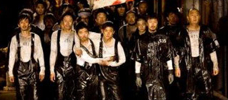
Kanikosen
2009 -

Police, Adjective
2009 -
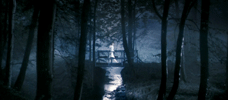
Antichrist
2009 -
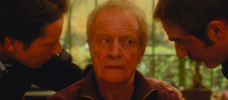
Wild Grass
2009 -

Lebanon
2009 -
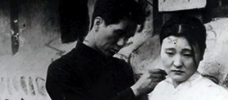
Crossroads of Youth
1934 -
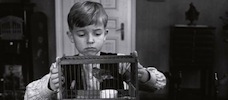
The White Ribbon
2009 -
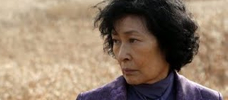
Mother
2009 -
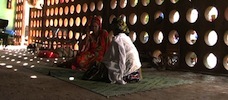
Min Ye
2009 -

The Art of the Steal
2009 -

In Comparison
2009
We don’t do comments anymore, but you may contact us here or find us on Twitter or Facebook.



